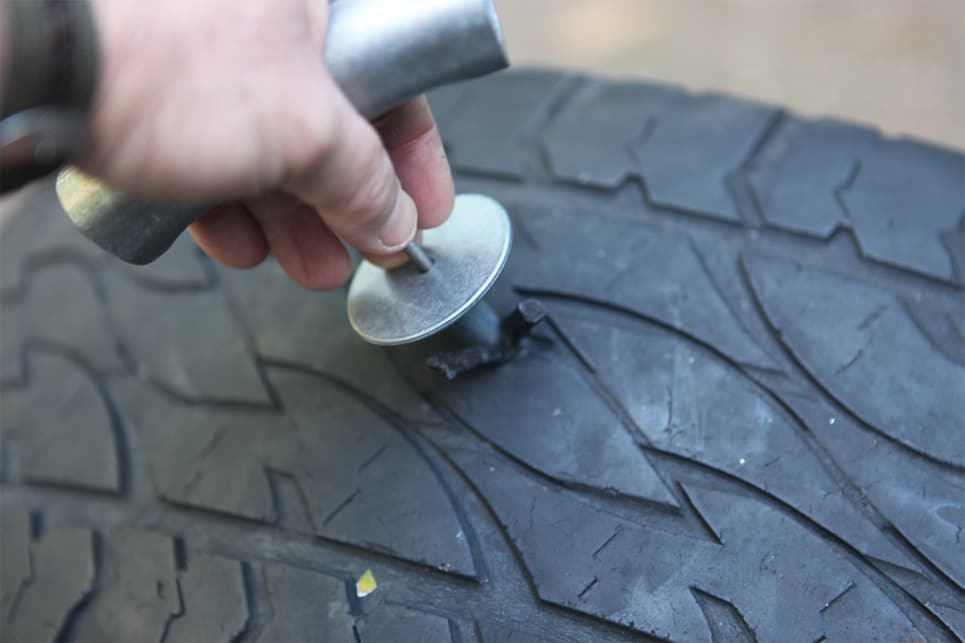Tips & advice
by: Dean Gibson
22 Apr 2021
22 Apr 2021
Tyres are a very important part of your car – after all, they’re the only components that remain in contact with the road surface. Because they’re your link between the car and the tarmac, it’s crucial that you keep on top of the tyres, and make sure they’re in a safe and roadworthy condition.
It’s definitely worth knowing what to look out for if you have a slow puncture. As its name suggests, a slow puncture means your car’s tyre gradually loses pressure over time, which means you could end up driving lots of miles before you notice there’s a problem.
You also run a higher chance of having a serious accident later down the line if you don’t realise one of your car’s tyres has an air leak. Drive too long with a slow puncture, and you could be on the receiving end of a major tyre failure that can put the safety of yourself, your passengers and other road users at risk.
There are early warning signs that can alert you to a slow puncture problem. While you’re driving your car, it may start drifting to the left or right sides of the road as the tyre deflates, and you may also hear a regular ticking-style noise if the slow puncture is caused by a piece of debris pierced and stuck in the tyre. Many cars nowadays also now come with tyre pressure monitoring sensors, which can alert you with warning prompts on the dashboard if the system detects a loss of tyre pressure – though, as not all cars are fitted with this tech, it’s best to not rely on this alone to warn you of a slow puncture problem.
If you catch a slow puncture early on, it may be possible to carefully drive the car for a short distance, as long as there’s still enough air in the tyre to keep it sufficiently inflated.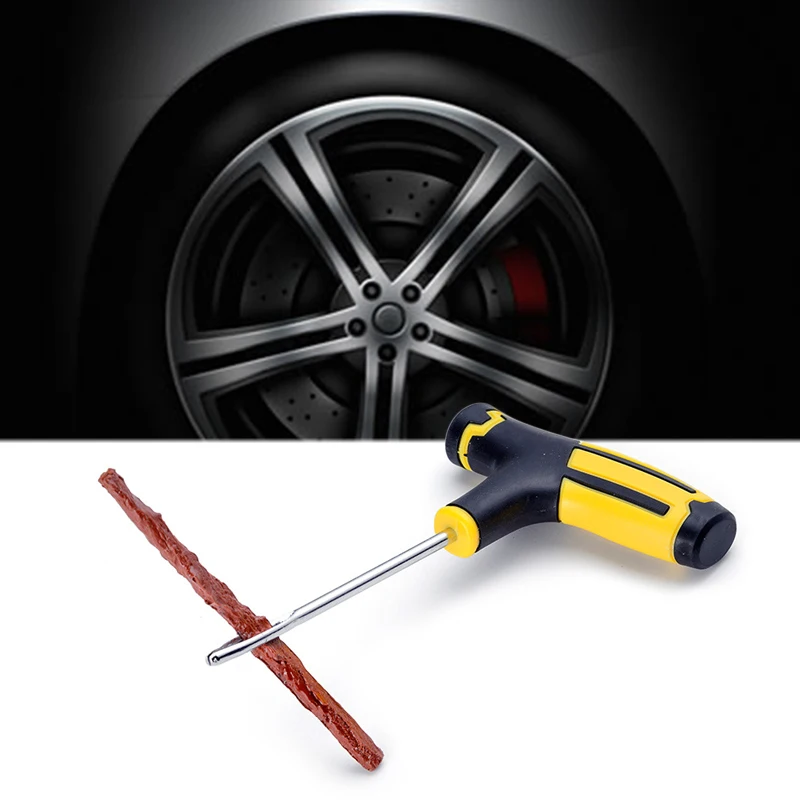 However, because more air will leak out the more you drive the car, you should only do this if the journey is absolutely necessary. Regardless of how bad the puncture is, you should have the faulty tyre repaired or replaced as soon as possible.
However, because more air will leak out the more you drive the car, you should only do this if the journey is absolutely necessary. Regardless of how bad the puncture is, you should have the faulty tyre repaired or replaced as soon as possible.
So what are the signs of a slow puncture? Well, the Highway Code tells drivers to give their car a visual inspection before driving off, and hopefully, that will help you spot a slow puncture before it turns into something worse. If a tyre looks a little out of shape when compared with the other tyres on the car, that could be a sign of a flat or a partial deflation.
Another visual clue could be odd wear to the sidewall. If a tyre is dirty and has low pressure, then the sidewall will be in contact with the tarmac, which will 'scrub' the tyre clean, giving a better visual clue to a slow puncture by creating a black sidewall that you can pick out clearly through the dirt.
Of course, the other giveaway would be a piece of debris stuck in the tyre itself.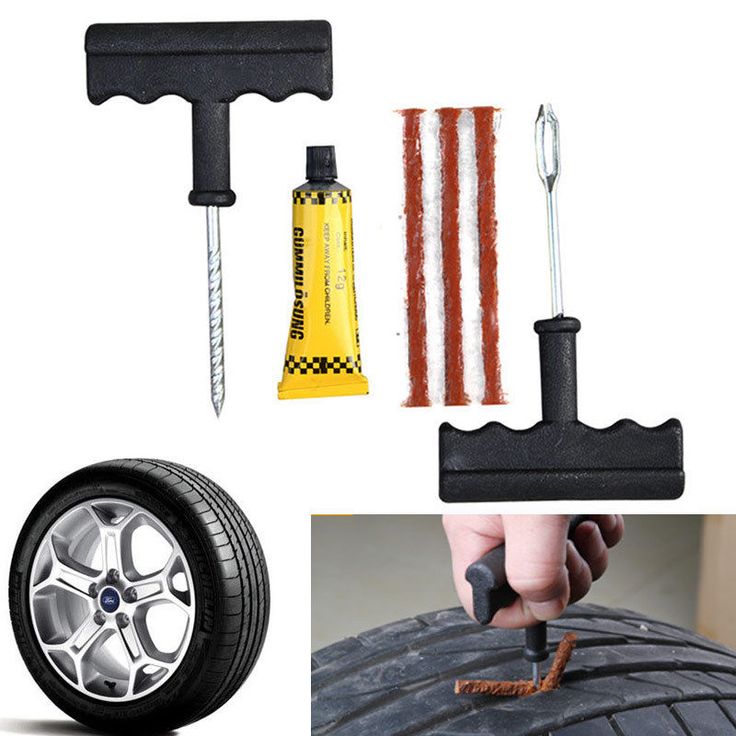 We're not saying you should get on all fours to give the rubber a proper inspection, but is there a screw or a nail that's obviously embedded in the tread or the external sidewall? If it's in the tread, it should be easy to spot, as the head will be polished clean if it's in contact with the road when you drive.
We're not saying you should get on all fours to give the rubber a proper inspection, but is there a screw or a nail that's obviously embedded in the tread or the external sidewall? If it's in the tread, it should be easy to spot, as the head will be polished clean if it's in contact with the road when you drive.
Every car owner should at least have a tyre pressure gauge that allows them to check their tyre pressures accurately. Our tests have shown which ones are the best, and if you buy a foot pump or automatic tyre inflator, then you should be able to easily see if a tyre is losing pressure.
• Complete tyre care guide
When you're driving, there will be audible clues to a slow puncture. It could be that a piece of debris in the tyre 'click-clicks' on the road for every revolution of the wheel. Or there may be additional road noise coming from a tyre that has less air pressure in it - if you think something isn't right, turn off the radio and shut the windows so you can hear things properly and identify if you have a slow puncture.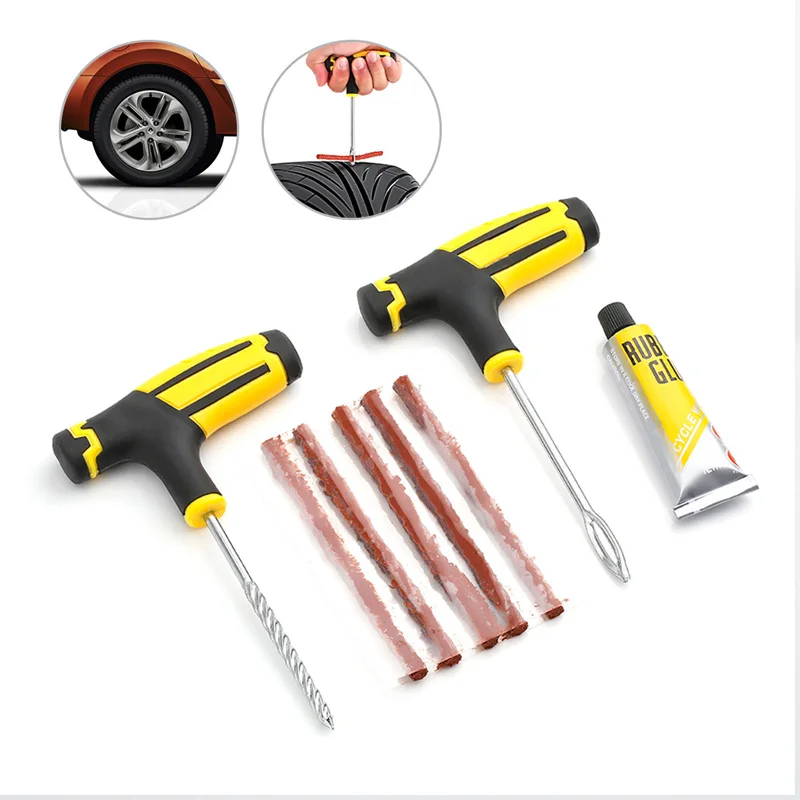
Modern cars are now required by law to have tyre pressure monitors fitted as standard. These use sensors in the wheel that detect a loss of pressure. As soon as one tyre drops a couple of pounds of pressure in comparison to the other four tyres, a warning will flash up on the dashboard to alert the driver.
If you do have a slow puncture, it's best to see if a repair is possible from your local garage, tyre fitter or a big chain like Halfords or Kwik Fit, and get it fixed as soon as possible. Driving on a slow puncture for any longer than necessary is dangerous because that slow puncture is more likely to become a fully flat tyre the longer you keep using it.
The usual culprit of a slow puncture will be debris that has pierced the rubber. If it's a nail or screw that has gone through the tread of the tyre (the flat part of the tyre that is in contact with the road), then it will be possible to repair the tyre with a rubber plug that a repair shop can fit. However, if the damage has happened to a high-performance tyre a repair of this type may not be possible, as some tyre speed ratings are not recommended for repair due to the higher stresses put upon them.
However, if the damage has happened to a high-performance tyre a repair of this type may not be possible, as some tyre speed ratings are not recommended for repair due to the higher stresses put upon them.
If the damage is to the sidewall of the tyre, then it cannot be repaired regardless of the tyre type. This damage will be to the main structure of the tyre that supports the tread, so it will weaken the tyre, which will affect its ability to perform properly.
You may be tempted to do a home repair with a puncture repair kit, which you will find in cars where a spare wheel is an optional extra. However, the 'gunk' that's used to seal the hole is only a temporary fix until the tyre can be properly repaired, so you'll end up having to get the tyre fixed anyway.
Another potential cause of a slow puncture is a corroded wheel. If a steel wheel is rusty, it might cause gaps where the parts of the wheel are welded together. On alloy wheels, corrosion is very different. If it's very severe, it could cause the metal in the wheel to become porous, allowing the air to slowly seep through the metal. That's an extreme case, but it's also common with cars featuring magnesium alloy wheels, as magnesium is naturally porous.
That's an extreme case, but it's also common with cars featuring magnesium alloy wheels, as magnesium is naturally porous.
• Best tyre tread depth and pressure gauges
You could also suffer a slow loss of air if the wheel is kerbed or damaged in some other way. If the rim has a dent in it, that might be enough for air to seep out. Whether a wheel is damaged or corroded, you could seek advice from a wheel refurbishment company on whether a repair is viable, or replacement is the only solution.
In any case, the best advice is to stay on the lookout for slow punctures and other damage by checking your car tyres on a regular basis. If you detect a slow puncture, don’t ignore it as you’ll only be increasing the chance of a bigger problem developing at some point in the future. Get the tyre seen by professionals and either repaired or replaced as soon as possible.
Think you have a slow puncture? Take a read of our test to find the best tyres to help find a replacement. ..
..
How to jump start a car
Tips & advice
Got a flat battery? This is how to jump start a car with jump leads or bump start it without them
23 Sep 2022
23 Sep 2022
Best ceramic coatings 2022
Product group tests
Which paintwork product will protect and survive best in our test?
20 Sep 2022
20 Sep 2022
Matte car paint: what is it and how do you look after it?
Tips & advice
Everything you need to know about matte car paint, including what it is, whether you should get it and how you should look after it if you do…
8 Sep 2022
8 Sep 2022
Best pressure washers 2022
Product group tests
Blast away grime with our pick of the best powerful pressure washer cleaners on sale
31 Aug 2022
31 Aug 2022
New 2023 Toyota C-HR on the way with range of powertrains
News
New 2023 Toyota C-HR on the way with range of powertrains
The second generation Toyota C-HR will feature combustion, plug-in and possibly electric power, and our exclusive images preview how it could look
14 Oct 2022
14 Oct 2022
New Polestar 3 revealed with 379 miles of range
News
New Polestar 3 revealed with 379 miles of range
Polestar’s second fully-electric model is a BMW iX-rivalling SUV with advanced safety tech and up to 510bhp
12 Oct 2022
12 Oct 2022
New Ineos electric SUV: smaller, rugged off-roader on the way
News
New Ineos electric SUV: smaller, rugged off-roader on the way
Ineos will follow up the Grenadier with a more compact all-electric model, built with the same robust ethos as its larger sibling
14 Oct 2022
14 Oct 2022
Published on: Monday, 17th February 2020 | Author: Bradley Jando
Slow punctures are common, but they can also be very difficult to detect.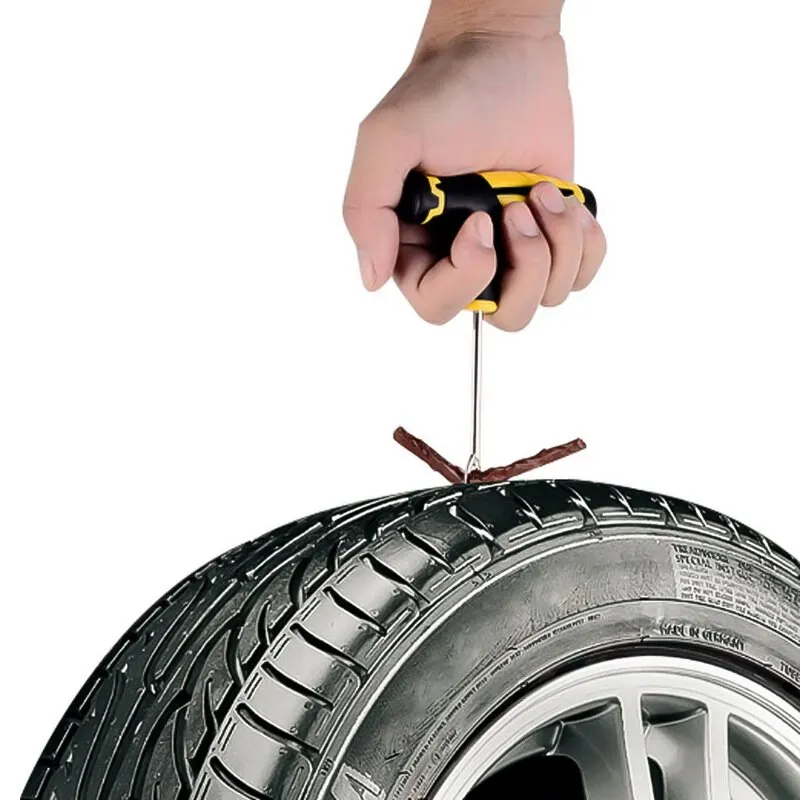 This means that many of us could be driving around with a gradually deflating tyre for weeks or even months, without having any idea there’s a problem.
This means that many of us could be driving around with a gradually deflating tyre for weeks or even months, without having any idea there’s a problem.
Let’s take a look at how slow punctures are caused, how to identify them and crucially, how to fix them.
A slow puncture is a tiny hole in a vehicle’s tyre, causing air to escape very gradually. It is unlike other larger punctures, which make themselves known almost immediately. If you suffer an ordinary puncture, you’ll notice the tyre deflating quite quickly. You may even be able to hear a gentle hissing sound coming from the tyre if you listen very carefully.
Both types of puncture can happen without the driver’s knowledge. You may only spot a change in tyre pressure when you get home, or the next time you try to drive the car. But with slow punctures, it can take days or even weeks for deflation of the tyre to become obvious.
Slow punctures are usually caused by driving over something sharp, such as a nail, screw or debris in the road. You can also get one by hitting a particularly nasty pothole or a kerb, which causes damage to the wheel rim or the sidewall within the tyre.
You can also get one by hitting a particularly nasty pothole or a kerb, which causes damage to the wheel rim or the sidewall within the tyre.
A less common cause of slow punctures is a fault with the tyre valve. If the cap doesn’t seal the valve tightly enough, or the valve dust cap is missing, the tyre can start to lose air. Dust and grit could even get into the valve with the same result.
Finally, slow punctures can sometimes be caused by damaged wheel rims, particularly on older cards with steel rims where there’s a gradual buildup of rust.
While you may not notice a slow puncture at first, there are certain warning signs to watch out for when you’re on the road. For example:
 It could be an issue with wheel alignment, or it could be a slow puncture affecting tyre pressure in one of the tyres.
It could be an issue with wheel alignment, or it could be a slow puncture affecting tyre pressure in one of the tyres.As well as keeping a close eye out for warning signs of a puncture while driving, you should also do some basic checks before you get in the car. A visual check of your tyres could help you to spot an embedded object, as well as tyres looking a little more deflated than usual. You can also get yourself a tyre pressure gauge, a handy gadget that allows you to accurately check whether your tyres are actually losing pressure.
A visual check of your tyres could help you to spot an embedded object, as well as tyres looking a little more deflated than usual. You can also get yourself a tyre pressure gauge, a handy gadget that allows you to accurately check whether your tyres are actually losing pressure.
Slow punctures should always be looked at by an experienced, qualified technician as soon as they are detected. It may seem like a small issue, but if ignored it can turn into a major problem.
Neglected slow punctures can lead to larger leaks or tears, which can negatively impact safety and handling on the road. Your tyres are your vehicle’s only contact with the road, so they need to have good grip and performance. Crucially, they need to be in great condition so that you can maintain full control of the vehicle while driving.
If you ignore a slow puncture, the worst case scenario is a tyre blowout or even an accident.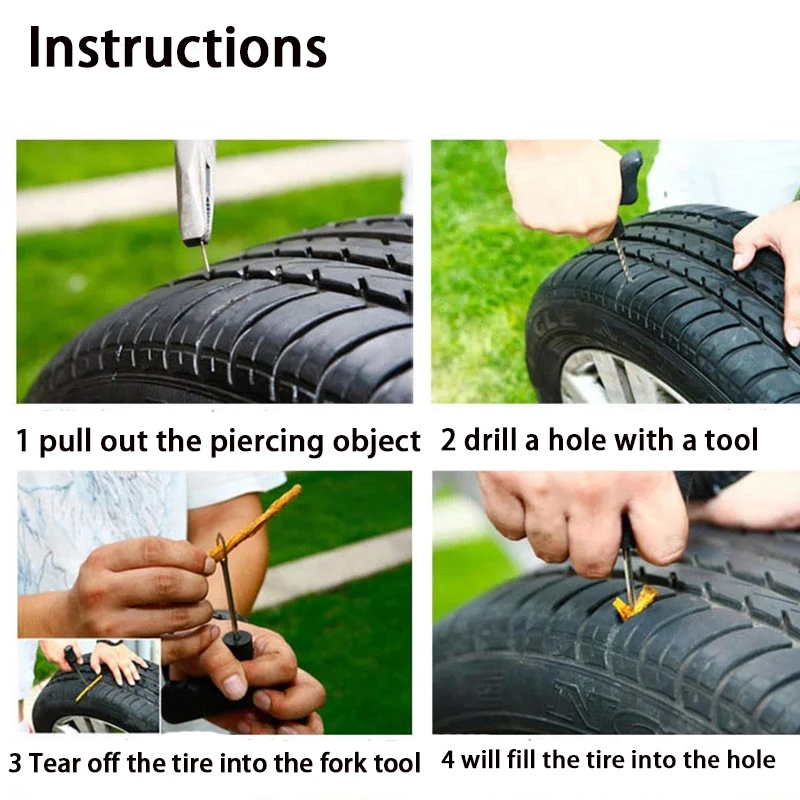 So, as soon as you spot it, get it sorted.
So, as soon as you spot it, get it sorted.
In many cases, slow punctures can be repaired. It largely depends on what’s causing the problem. If there’s a nail or piece of embedded debris in the tread of the tyre, an experienced technician can simply fit a rubber plug to repair the hole.
However, such an easy fix may not be possible for high performance tyres. This is because these tyres are designed to withstand higher stresses than ordinary tyres, so they can’t have any vulnerabilities.
If your slow puncture has been caused by damage to the tyre sidewall, a dent to the rim or a corroded wheel, a repair may not be possible. In this case, a replacement tyre or other key component may be needed. Your repair centre will advise you on the best way to get your wheel and tyre back to full working order.
You may be tempted to repair slow punctures yourself, using a home DIY repair kit. This can do the job on a temporary basis until you can get professional assistance, but it isn’t recommended as a long-term fix for a slow puncture.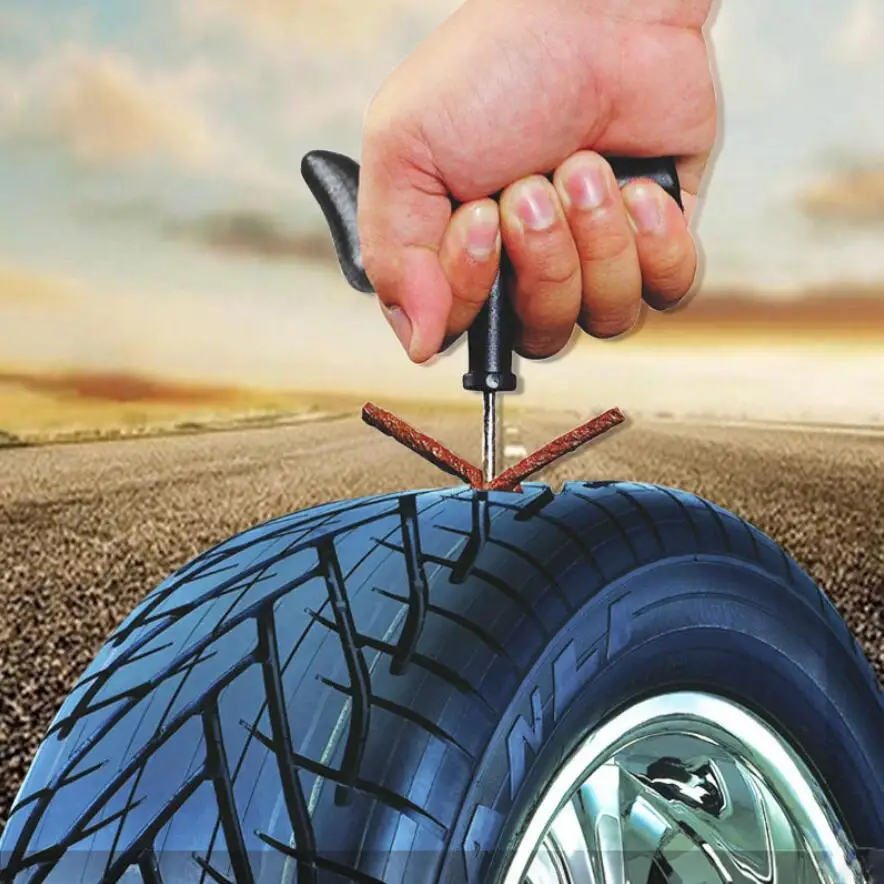 The substances used in these kits won’t last, so you’ll eventually need to get the tyre fixed anyway.
The substances used in these kits won’t last, so you’ll eventually need to get the tyre fixed anyway.
If in doubt, always call in a professional. There could still be something embedded in the tyre, or a more serious issue (i.e. damage to the tyre sidewall) you aren’t able to detect. It’s not safe to drive on damaged tyres, and it’s just not worth taking the risk.
Tags : Advice Driving Tips
90,000 replacement, wheel balancing, tire repair, rolling of discsfrom 1 hour
Leave the application to 16.10 and receive a personal discount for the service
/ of 2800 ₽
Learn the cost of tire for your car
ATTENTION PRICES ARE FOR CARS
CASH
BY BANK CARD
CASH CLEARING
Price for restoration, tuning and detailing depends on the class of car, specifics of the situation, your individual wishes and preferences.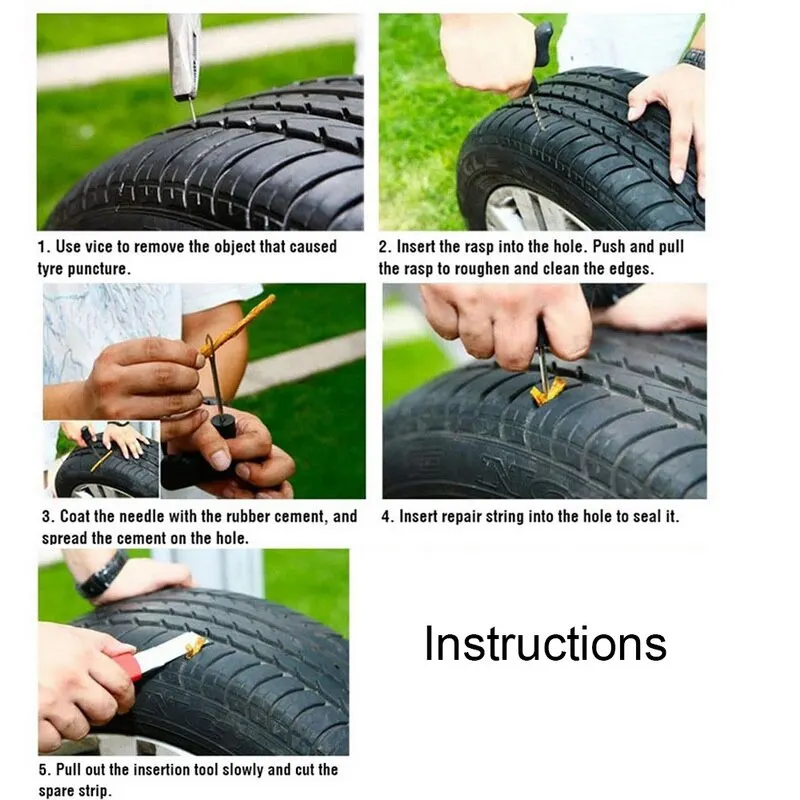 For an individual cost estimate, please consult with a specialist.
For an individual cost estimate, please consult with a specialist.
Call for exact pricing: +7 (499) 455 59 70 or leave a request, we will call you back.
Installation of wheels of all possible sizes. Disposal of old tires and wheels. Balancing. Repair of damaged tires (punctures, cuts). Rolling discs when they are damaged. Checking and correcting tire pressure. Tire inflation with nitrogen.
Our priorities are low prices and responsibility. When performing tire fitting works, our specialists use only high-quality and time-tested consumables. At the disposal of the detailing studio is a complete set of modern tire fitting equipment.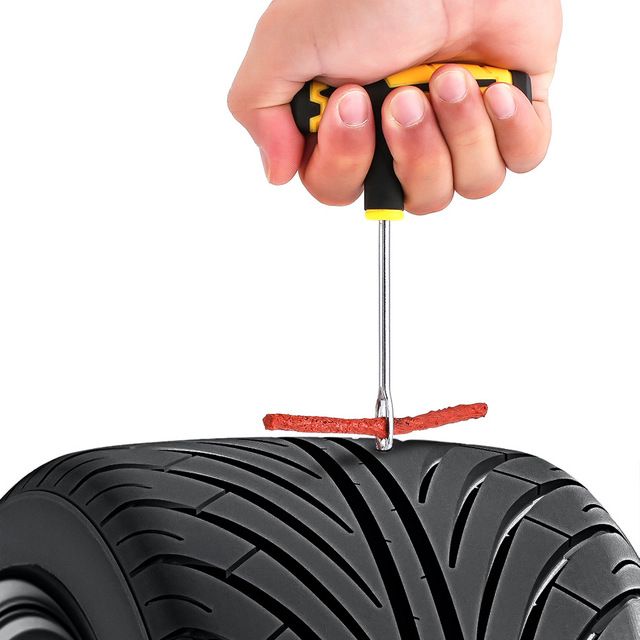 This allows masters to easily and quickly cope with both elementary and complex and non-standard tasks.
This allows masters to easily and quickly cope with both elementary and complex and non-standard tasks.
Car tires are exposed to intense daily use which, if improperly installed, causes rapid wear and can cause serious accidents. When choosing tire fitting services, you should be absolutely sure of the competence and professionalism of the masters.
Open every day, seven days a week 24/7
coffee.
Autopersona detailing studio will perform a full range of tire fitting works at affordable prices at a high level of quality. All work is carried out on first-class imported equipment with strict observance of the tire fitting technology, which avoids mistakes and saves the client's time.
We also offer replacement of old wheels and tires with new ones. We select a replacement by manufacturer, year of manufacture, engine modification and tire model. Old tires and wheels are recycled.
Tire service
Removal or installation of a tire on a rim. Tire fitting is carried out during the seasonal change of rubber, or for its repair.
Tire fitting is carried out during the seasonal change of rubber, or for its repair.
Tire fitting includes the following list of works:
During installation, a special professional lubricant is used, which ensures the impermeability of the wheel, prevents the development of corrosion of the disc.
It is not recommended to do the work yourself, as an incorrectly adjusted wheel can cause serious damage to the suspension and other controls, resulting in the need for costly repairs.
Wheel balancing
The service is used to eliminate horizontal and vertical wheel oscillations, which would otherwise lead to uneven tread wear, problems with transmission, suspension, discomfort for the driver and passengers during a trip to the car.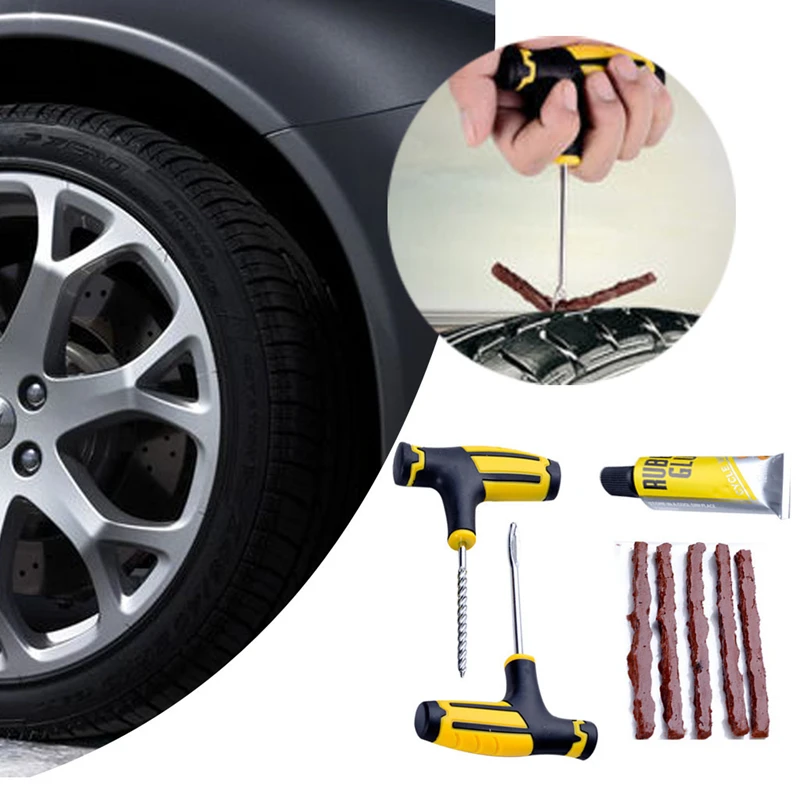
The imbalance of the wheel assembly is corrected by installing balancing weights. After balancing each wheel separately, the wheels are installed on the car, and the final balancing is performed, as well as the regulation of the transmission, suspension and braking system units.
Balancing work must be carried out regularly.
Tire Repair
Cuts, punctures, and other damage to any area of the sidewalls and tread will reduce tire performance and road safety. Tires with damage must be replaced with a new one or repaired.

Vulcanization is possible if the carcass and bearing part of the tire has not been damaged.
The area of damage is cleaned and dried, the hole is filled with technological compound, then hot pressing of the tire is carried out on special equipment.
Mushroom cap serves as a patch, the stem is threaded from the inside of the tire to the outside. After the patch is glued, the leg is cut flush with the surface of the tire, the tube is inflated. As a result, not only the damaged surface of the tire is closed, but also the hole.
Tire pressure monitoring and correction
Proper tire pressure ensures optimum fuel consumption and durability of vehicle wheels. If the parameter is exceeded, then the car will seem to jump on uneven roads, since an excessively hard tire reduces the adhesion of the wheel to the roadway. In addition, such a tire can be damaged by a stone or a pothole, the tread pattern is unevenly erased on it.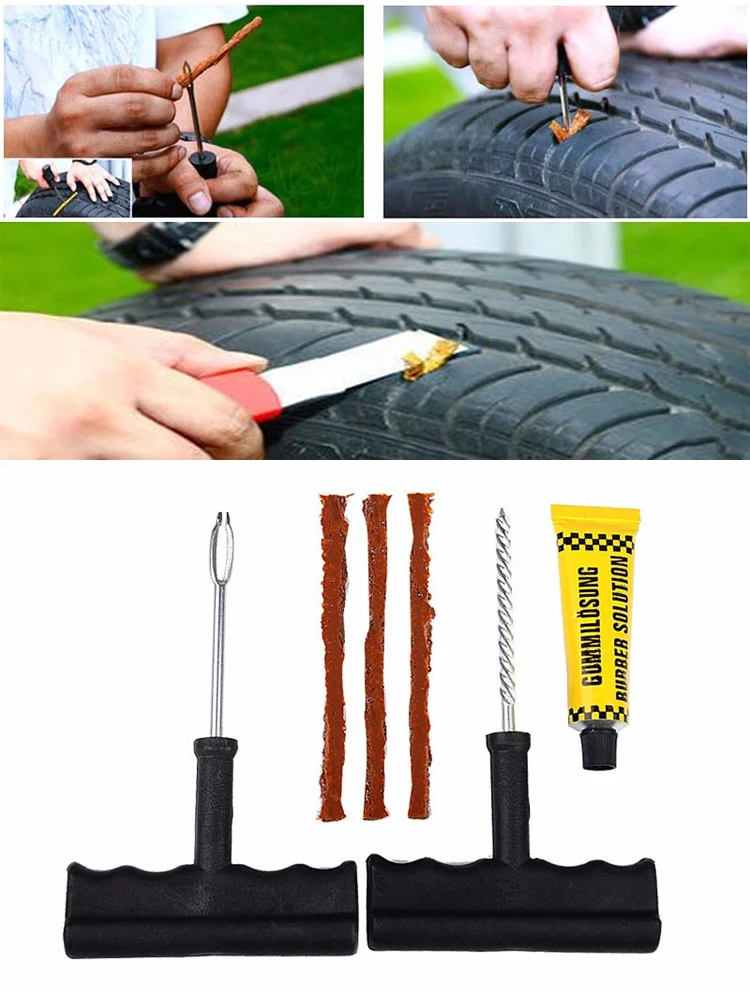 At the same time, overinflated tires make it easier to drive a car, as they increase the stability of the vehicle, so the pressure in the wheels of racing cars should always be higher than normal.
At the same time, overinflated tires make it easier to drive a car, as they increase the stability of the vehicle, so the pressure in the wheels of racing cars should always be higher than normal.
If the indicator is below the norm, then the tire wears out faster than usual, and fuel consumption also increases. In addition, the owner will need to buy 540 liters of gasoline for 20,000 km.
A car with half-flat tires is not stable on sharp turns, slows down much longer than usual, steering becomes more difficult, which can lead to an accident.
A specific tire pressure is recommended for each car model. It is impossible to exceed this figure, as well as to determine the tire pressure indicator by eye. Pressure control is carried out with a pressure gauge in the tire on a “cold” car, which has stood in place for several hours. If the pressure is low, then the wheel is pumped up by means of a compressor; if it is high, then the air is released by pressing the nipple. All tires must have the same pressure!
All tires must have the same pressure!
Tire pressure must be checked at least once a month, in winter once a week.
Inflating tires with nitrogen
The use of a gas mixture instead of air to inflate tires has the following advantages:
wheels are easier and softer to overcome the unevenness of the roadway;
makes steering easier;
eliminates tire pressure drops, which guarantees a comfortable ride in cold and hot weather;
does not oxidize and damage the wheel and disc from the inside, which increases their durability.
Rolling of alloy wheels
The service is relevant when changing the geometry of wheels. Work begins with damage measurements, then the specialist processes the deformed surface on the machine, after which the disk acquires its original shape. Upon completion, it may be necessary to paint the straightened part of the disk, which is much cheaper than buying a new one.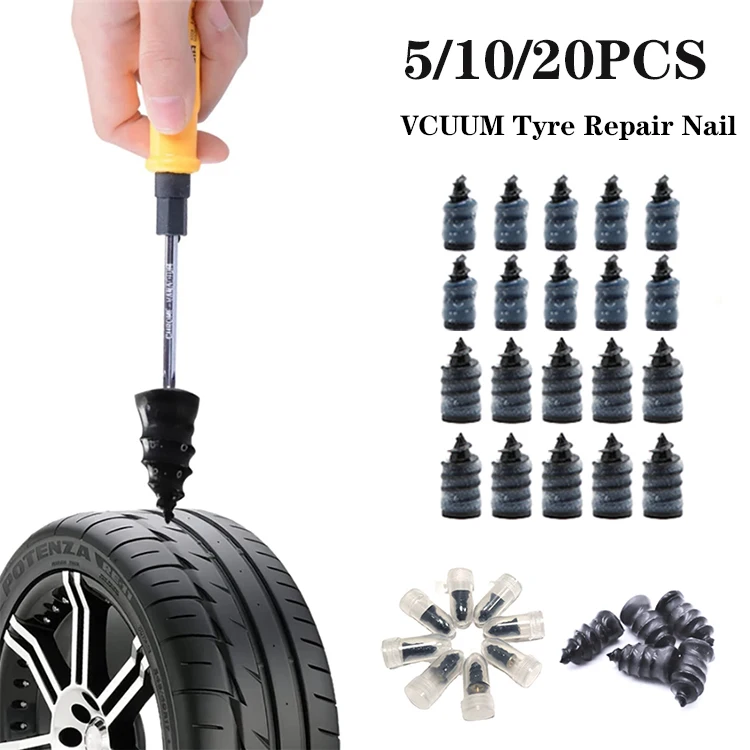
Our advantages
Our masters will perform tire fitting accurately and in a short time.
Let's repair tires of wheels of any complexity using the best certified materials.
The client chooses the date and time of visiting our salon.
According to history, one day in 1888, an English veterinarian and cyclist, John Dunlop, tired of shaking through the countryside of Britain on molded rubber tires, glued a piece of water hose with a ring and pumped it up with a football pump - this is how the first pneumatic tire appeared.
History is silent when it was pierced for the first time - but most likely it happened in the same year. So the need for tire repair appeared simultaneously with their appearance.
Puncture required cut with burr Over the past 124 years, tire repair technology has been brought to almost perfection. For several decades (after tubeless tires in the vast majority have given way to tubeless ones), the procedure for repair has practically not changed.
For several decades (after tubeless tires in the vast majority have given way to tubeless ones), the procedure for repair has practically not changed.
This procedure is outwardly quite simple - and car owners (as well as part of the workshop workers offering this service) have the false impression that it is not particularly important to follow the prescribed technology exactly - they say, "it will do." And many "specialists" do not really know the technology. And therefore they sincerely believe: why do we need all sorts of "extra" actions? Why take the tire off the rim when you can keep the wheel off the car at all? The client is in a hurry - so you can plug a puncture (and a cut) with a cord, as they say, “on the go”. Does not poison the air, and everyone is happy. By the way, some workshops that promise “repair of punctures and cuts” do not have anything at all, except for cords and an awl for their installation.
In fact, each stage of tire repair technology is, as they say, "written in blood" - like military regulations and safety instructions. And this is not an exaggeration: what threatens a sudden rupture of a wheel at speed is not worth saying - if people do not die, then they are very lucky ...
We asked our expert, one of the heads of the Russian representative office of the German company "REMA TIP-TOP GmbH" Alexander Akhapkin, to talk about tire repair technology and those common mistakes (or even outright hack work) that car owners have to face.
- Tire repair, in general, comes down to a simple and understandable action: you need to plug the resulting "hole" in it. It sounds simple - like the instructions for skydiving: stepped out of the plane and pulled the ring. Only now, no one jumps with a homemade parachute, especially one packed according to rumors and advice from neighbors. Although the consequences of such a jump and improper tire repair are quite comparable.
So let's go in order: how to do it!
So, the first step: determine the type of damage - is it a puncture or a cut?
The difference, of course, is in size.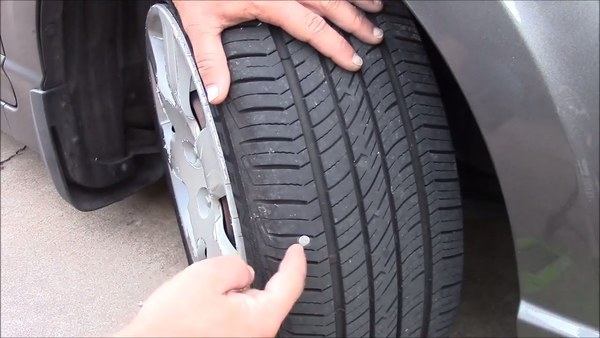 Roughly speaking, if no more than 1-2 cord threads are damaged, then this is a puncture. Anything more is a cut.
Roughly speaking, if no more than 1-2 cord threads are damaged, then this is a puncture. Anything more is a cut.
If it is a cut, it is important to determine its size. Tires have speed categories - and the higher it is, the smaller the amount of damage that can be repaired. For example, it is allowed to repair the tread of a category Q tire (not higher than 160 km/h) if the damage is not more than 20 mm. If the tire category is S (up to 180 km / h), then the size of the permissible damage is not more than 12 mm. And on a category H tire (up to 210 km / h), only a puncture with a diameter of not more than 3 mm can be repaired.
In general, damage limits depending on their location, size and speed category of the tire are given in special tables RemaTipTop, compiled according to the results of tests and tests.
When repairing with a cord, it is necessary use adhesive For example, regarding damage to the shoulder of a category Q tire (up to 160 km/h), repairs are allowed if the “injury” does not exceed a diameter of 8 mm.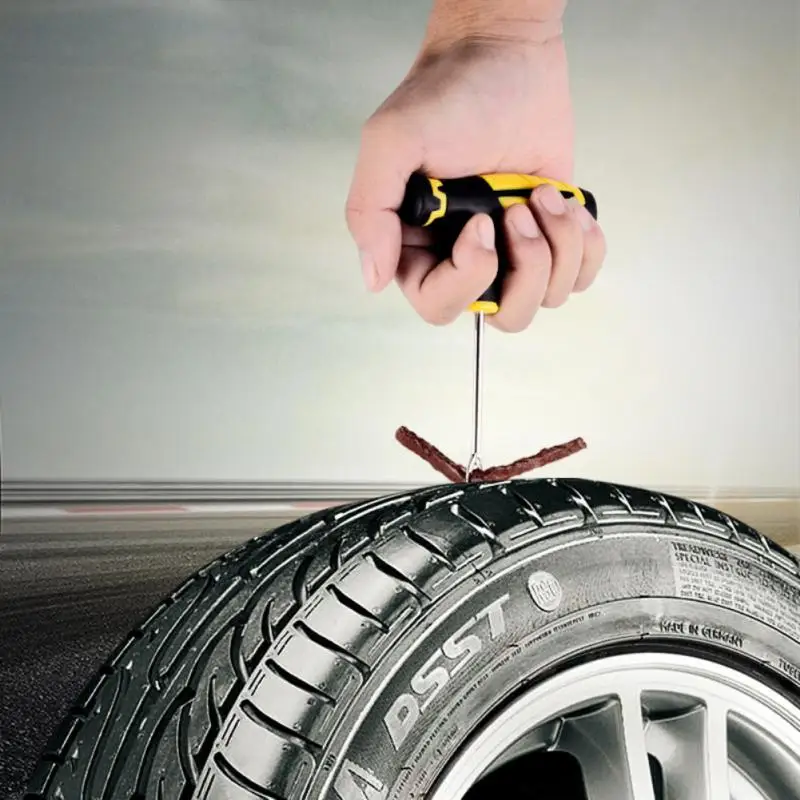 And damage to the sidewall can be repaired if it is no more than 35 mm long (along the side height) and up to 20 mm wide.
And damage to the sidewall can be repaired if it is no more than 35 mm long (along the side height) and up to 20 mm wide.
Second step: what kind of repair is needed? To get there - or capital? The fact is that the most common repair of a puncture with a cord is actually exclusively temporary - just to get to the station and overhaul the tire. And often the car owner asks to fix an expensive tire with a cord, which he puts on an expensive car - and stops there. And at the stations they “go forward” to him: they say, the consequences are at the expense of the customer ...
But even with such a repair, some "masters" manage to cheat. The cord, before placing it in the puncture, is not even smeared with glue. There is a category of cords made of "raw" rubber (they are also called "snotty"). And it is mistakenly believed that glue is not needed for them. No - it's a must!
In addition, when repairing with a cord, it is necessary to form a hole with a burr to enter the repair material.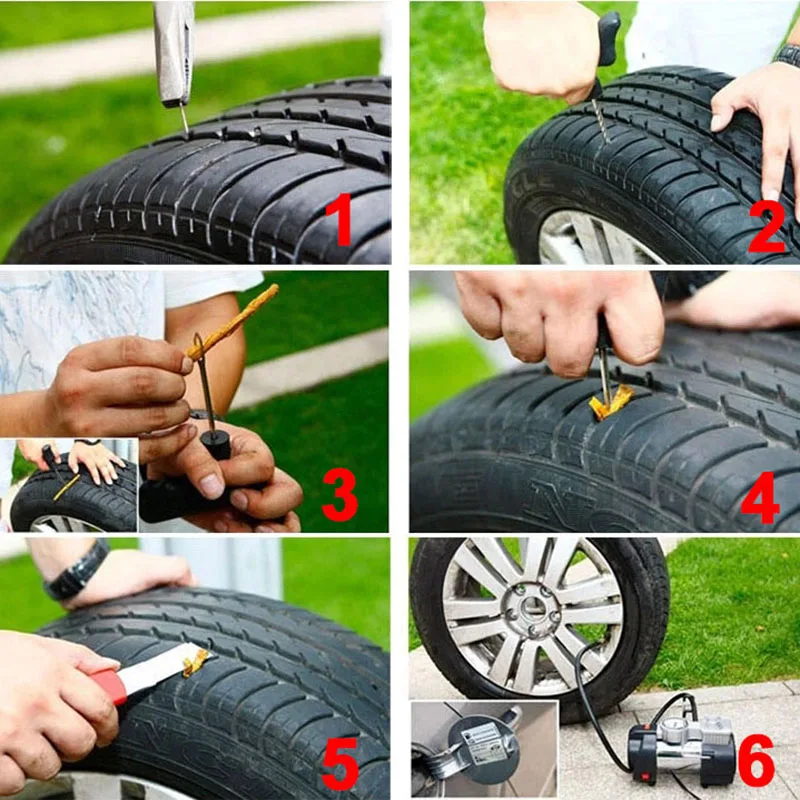 And this is very often not done (on the principle - and so it will do!). For ten kilometers, maybe it will “get off” ...
And this is very often not done (on the principle - and so it will do!). For ten kilometers, maybe it will “get off” ...
Step three: puncture overhaul, after which the tire will reach its physical wear.
Fungi are installed at "vertical" puncturesHere the choice of repair tactics depends on the location and area of damage. If the puncture axis runs perpendicular to the tread surface, then it is preferable to seal it with a fungus. If the puncture axis runs at an angle of more than 12 degrees from the surface, then a plug must be used.
Tire repair fungus is preferred, but if the puncture is at an angle, the fungus head will not be able to fit snugly against the inside of the tire. And over time it can come off - which, of course, is unacceptable.
In principle, all actions of the wizard when using both fungus and cork are the same. The puncture is drilled with a burr with a diameter of 3 mm or 6 mm. The repair area from the inside of the tire is processed with a roughening tool - this is done so that the glue applied to the fungus cap or patch (if cork is used) firmly adheres to the surface of the tire.
But this is followed by an outwardly simple but obligatory operation - the dust formed after drilling and roughening is carefully removed with a brass or coconut brush, and then vacuumed. Moreover, simple “blowing” or brushing with a rag is unacceptable!
Processing with a special solution - required!Then the repair area is smeared with glue (the Germans call it "cement" - that's what it says on the containers with it. In fact, this is a high-tech adhesive system) and a fungus or cork is introduced into the hole - from the inside of the tire! Moreover, until the moment of installation, it is impossible to remove the packaging from the fungus or cork - it can be easily removed when they are introduced into the hole to be sealed. After installing the cork, its excess is cut off - and the repair area is smeared with glue. A patch is applied on top.
Next, the fungus cap or plaster is rolled on. And it remains only to cut off the excess fungal stem or cork from the outside of the tire.
It is very important to use materials from only one company for temporary repairs with a cord and a major fungus or plug! The fact is that the adhesives themselves are spilled: there are those produced on the basis of hydrocarbons, and there are those based on trichlorethylene. In addition, adhesives from different companies, even on the same basis, differ in composition. And therefore, in case of confusion, a reliable connection will not work - at best, it will last for some time. But - a little time ...
Fourth step: overhaul of large damage. Let me remind you that damage that exceeds a puncture, but does not exceed the maximum allowable, is considered large. With such damage, the tire is only scrapped - it is no longer possible to achieve the necessary reliability.
The technology of such a repair is simple - but there are no "extra" steps and steps in it. Outside, the place of damage is cut "under the funnel" - part of the damaged rubber is removed, the remains of the cord. From the inside, the place under the patch sticker must be roughened.
From the inside, the place under the patch sticker must be roughened.
Then the dust must be carefully removed after processing with a vacuum cleaner - and this operation must not be skipped!
Next, the “funnel” is treated with a special solution: in the case of using the “Tip Top” technology, this is “MTRThermopress”.
And filled with raw rubber of the same brand as on the tire - heated strips or a special extruder. Raw rubber is treated with the same solution. And immediately closed with insulating foil for subsequent vulcanization.
Please note - do not skip a double treatment with mortar, nor cover the vulcanization site with foil!
A plaster is applied from the inside of the tire to the damaged area. And be sure to roll with a special rolling - this stage also cannot be skipped.
Something about Band-Aids: Don't try to save money by replacing your branded Band-Aid with the first piece of rubber you find! In fact, a patch is a rather complex rubber product reinforced with synthetic or steel threads that coincide with the direction of the tire cord threads.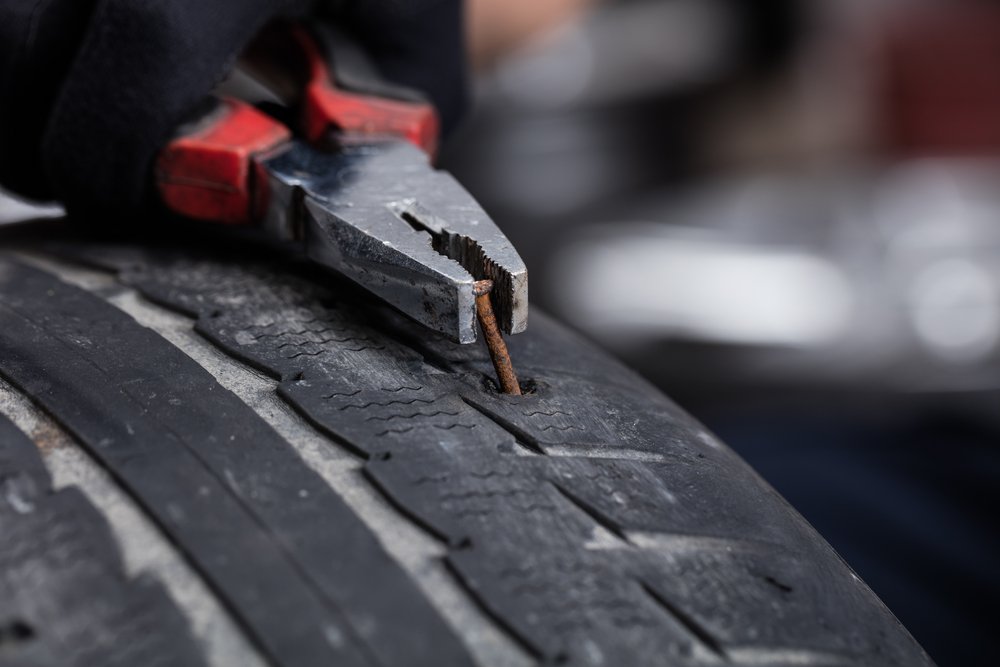
Patches are produced separately for bias and radial tires. For their correct orientation (it is very important!) Arrows are applied on each of them, which are directed to the sides. You cannot cut the patch "to size" - it cannot be cut at all due to the complex internal construction of the cords. Companies produce several sizes of patches - and you need to choose from them using the Type Top damage table.
There are also inexpensive vulcanizers - for example "Junior"Naturally, the use of patches and adhesives with which they are glued, produced by different companies, is unacceptable - “cement” is applied to the surface of the patch, which needs to be smeared on the surface from the inside of the tire: only in this case the connection will be reliable and durable.
Step five: vulcanization. In order to vulcanize a “sandwich” of raw rubber, a tire and a plaster, it must be heated. But the problem is that vulcanizers, whose power allows you to warm up the entire volume of the repaired area, are expensive and consume a lot of electricity. In addition, they are bulky - the area of \u200b\u200bthe heating plate must exceed the size of any patch. So not every workshop can afford such a vulcanizer.
In addition, they are bulky - the area of \u200b\u200bthe heating plate must exceed the size of any patch. So not every workshop can afford such a vulcanizer.
There is another solution - the so-called "two-stage" repair method. This is when a vulcanizer that is more affordable and consumes less electricity is only the site of damage. Its size is not enough to vulcanize the connection of the patch and the tire.
But it's okay - there is an effect called "cold vulcanization". Glue BL and the coating of the plaster from Tip Top are just capable of such a "cold" vulcanization.
However, if after a one-stage - “hot” - vulcanization, the tire can be mounted on wheels and installed on a car, then after a two-stage one (when only raw rubber warms up, and the patch is glued “cold”), you will have to wait at least 24 hours before mounting. It is these days that make up the second stage - the time is required for the cold polymerization of the connecting layer to be completed.